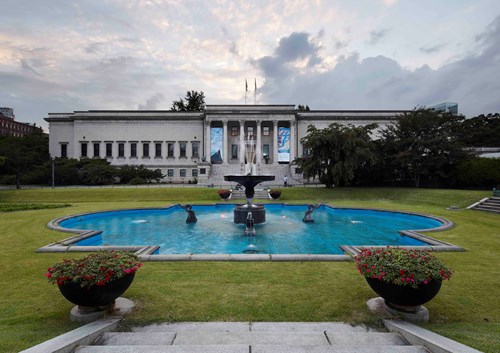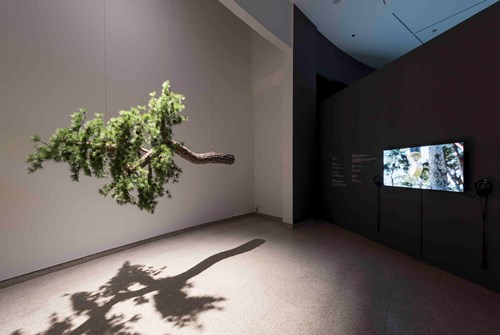Running a Museum on the Korean Peninsula

“The great privilege of working in the fields of modern and contemporary, is that we can make history be part of the present, read how the present relates to the past and create experiences that allow us to imagine the future,” Bartomeu Mari I Ribas, National Museum of Modern and Contemporary Art in South Korea. The MCCA is the National Museum of Modern Contemporary Art in South Korea. The main gallery space is found in Gwacheon city and there are three further branches in Deoksugung, Seoul and Cheongju. ArtDependence caught up with Bartomeu Mari I Ribas, Director of the MMCA, to learn a little more about Korea’s flourishing art scene.
“The great privilege of working in the fields of modern and contemporary, is that we can make history be part of the present, read how the present relates to the past and create experiences that allow us to imagine the future,” Bartomeu Mari I Ribas, National Museum of Modern and Contemporary Art in South Korea
The MCCA is the National Museum of Modern Contemporary Art in South Korea. The main gallery space is found in Gwacheon city and there are three further branches in Deoksugung, Seoul and Cheongju. ArtDependence caught up with Bartomeu Mari I Ribas, Director of the MMCA, to learn a little more about Korea’s flourishing art scene.
ArtDependence Magazine: Can you tell us a little about the structure of the MMCA?
Bartomeu Mari I Ribas: The National Museum of Modern and Contemporary Art of the Republic of Korea (aka MMCA) has a fascinating history. It was created in 1969 out of the impulse of artists, who also demanded its professionalization and equipment with international standards. Initially it used spaces in the Kyeongbokgung Palace, and in 1986, MMCA Gwacheon was opened to the public in a new building designed by architect Kim Tae-soo. It is a large building (67.000 m² built, with 11.500 m² of exhibition space) in the heart of the Seoul Grand Park, a large and mountainous “green lung” in the South of metropolitan Seoul.
MMCA Gwacheon expresses the social ambience of the 1980’s with high levels of industrial and economic development. In 1987 South Korea became a democracy after decades of military dictatorship and in 1988 the Olympic Games were organized in Seoul. After years of development that were also coupled with social control and little direct contact with the exterior (Koreans were not allowed to travel abroad freely until 1987), the country started a rapid process of globalization. In 1998, the MMCA Deoksugung opened its doors as a specialized venue for modern art and in 2013, MMCA Seoul opened to the public also in the centre of Seoul with 9.000 m² of gallery spaces and numerous state of the art facilities.

MMCA 4 branches: Seoul

MMCA 4 branches: Deoksugung

MMCA 4 branches: Cheongju

MMCA 4 branches: Gwacheon
MMCA Deoksugung’s building dates from 1938, a fascist-style construction within a small palace next to the City Hall of Seoul. Deoksugung is a beautiful and dramatic “page” of Korea’s modern history. Gojong, the last King of the Joseon Dynasty (1392-1897) declared the Korean Empire 100 years ago and established his official residency there. He commissioned a British architect to build it in neo-classical style. It was the first building using stone in Seoul. Gojong lived there as a prisoner of the Japanese who invaded Korea in 1910. MMCA Seoul includes a former military hospital, a red-brick rationalist building from 1928 and occupies a large compound that was, after the Korean War, a prison managed by the Defence Security Centre, the Korean C.I.A., representing one of the dark chapters in recent Korean history: turning it into a museum, the place is now dedicated to a central civic use. MMCA is one of the pioneer museums of its kind in Asia and, when we add the three buildings, it is also one of the biggest in the world. At the end of 2018, MMCA will open its newest venue in Cheongju. It is in a former cigarette factory that will host the Storage for the National Collections of Modern and Contemporary Art, with exhibitions, education programs, etc.
In the past, a lot of attention has been put towards differentiating each venue with a specific identity, but our efforts now go towards “connecting” them, so that the audiences will feel stimulated to go from one to the other. The great privilege of working in the fields of modern and contemporary, is that we can make history be part of the present, read how the present relates to the past and create experiences that allow us to imagine the future. We can explain that while the present is globalized and looks similar to other “presents” in the rest of the world, the modern period has very particular expressions in Korea. Explaining this uniqueness and that Korea is a fundamental voice in the global conversation of art is an essential mission of our museum.
BMIR: The Korean museumgoer is very attracted by what is new. I don’t think you can say the same about the Japanese society and I am not familiar with the Chinese, yet numerous museums and venues for art are being built in China. Art in the East is different according to specific traditions and history. Modern art was imposed on Korea during the Japanese occupation (1910-1945) and after the Korean War (1950-1953) the influence of the U.S. was phenomenal. Craftsmanship is still very important in Asian societies and plays a very central role in the general conception of art. Figurative painting is difficult to find in Western museums of modern and contemporary art yet it occupies a very central role in the art produced in Asia.
AD: You have a very balanced and international program. Do you think museums elsewhere in the world pay enough attention to Eastern art?
BMIR:Asian art is not well known in the rest of the world. Only a few names are known. Our mission is to elaborate on narratives that locate artists’ works through time and explain what makes the individuals be part of a community or a given period…

Reenacting History: Exhibition view

Reenacting History: Exhibition view
AD: Your country and region are often in the news due to activities in North Korea. Does this situation influence art made by South Korean artists? Does it influence the museum’s programming?
BMIR: Of course, it is. South Koreans are very well aware of the implications of their own history. We are about to open the exhibition “Things that Do Us Part” by artist and filmmaker Im Heung-soon. It is a parabolic narrative of the modern history of Korea as felt and told by real people. The exhibition “Re-enacting History” on show at MMCA Gwacheon until January 28, 2018, includes various new artworks created by Korean artists directly dealing with our present, especially the works from Lim Minouk and Park Changkyong. And the four artists included in the 2017 Korean Artist Prize, Sunny Kim, Kelvin Kyungkun Park, Bek Hyunjin and Song Sanghee, are, each in a specific way, dealing with the conditions of our time and place. The history and present of Korea provide incredibly rich materials for artists to work with.

Reenacting History: LIM Minouk, O Tannenbaum

Im Heung Soon: on-site still photo

Korea Artist Prize (KAP): 1. Sunny Kim_Landscape, 2014-2017, 244x732x244cm
AD: What exhibitions do you have coming up?
“The Arrival of New Woman” at MMCA Deoksugung is a long-awaited project. It will look at the appearance of a new social actor: a new type of woman that expresses herself not only with a new aesthetics but that acts socially different as well. In a male-dominated society, ruled under the strict Confucian rules promoted by the Japanese occupation, new social types and behaviours are being allowed and imposed. The exhibition looks at how art, popular culture and mass media reflect the emergence of other forms of femininity. In MMCA Gwacheon two exhibitions from female artists will offer an echo to “new woman” … The monographic shows of Lee Seundja and Lee Jungjin, which we created in co-production with the Fotomuseum Winterthur. These shows will express our will to give female artists a more prominent role in our program.

The Arrival of New Women: Kim Kichang, Quiet Listening, 1934, 314X159cm, Color on silk

The Arrival of New Women: Pen Varlen, Portrait of the Dancer Choi Seunghee, 1954, 118x84cm, Oil on canvas

The Arrival of New Women: Lee Yootae, A Pair of Modern Women_Thinking of Research in Lab, 1944, 212X153cm, color on paper
As mentioned earlier, “Things that Do Us Part” by Im Heung-soon is the 2018 edition of the Hyundai Motor series, a large new commission. Lim has done a complex dramatic construction that unfolds as a Matryoshka doll: a film that becomes the setting for a theatre play, with a song, that becomes later another film… and all about the current conditions of Korean society in relation to its modern history. It is a real “tableau d’histoire” with modern and old media. It inludes performances, installation, projections…
Other great projects include a large group exhibition with young artists from different regions of Asia, interrogating precisely what Asia can be today or how Asia can be defined through the voices of the younger generations. MMCA wants to become one of the leading voices in bringing Asian art to the rest of the Globe. The monographic exhibition dedicated to Bahc Yiso could be one of the most successful explorations into the work of an exceptional artist that deserves global attention. “Civilization. The way we live now” will use the medium of photography to explore to read our stage of civilization (or barbarianism) at a global level with well rooted Korean and Asian contributions to it. We are close to confirming a dense international touring route for this ambitious project.
Another long-awaited project is the exhibition of Akram Zaatari on the history of the Arab Image Foundation. It is an extraordinarily precise interrogation of the current status of photography at an age when photography, as we have known it, has disappeared. A monographic exhibition dedicated to the painting of Yoon Hyong-keun will honour the deceased modern master in the autumn. We will address the relationship between art and the 4th Industrial Revolution by remembering and bringing to the present the Experiments in Art and Technology (E.A.T.), we will reinvent the presentations of the MMCA modern and contemporary Collections. Jenny Holzer, Marcel Duchamp and Harun Farocki are also on our list of international artists for next year. We will also present more Korean artists through the Korean Artist Prize, the Hyundai Motors commission and the new Project 8. There are many shows planned for 2018 and I can’t mention them all…. Please, readers, be attentive to our website!
